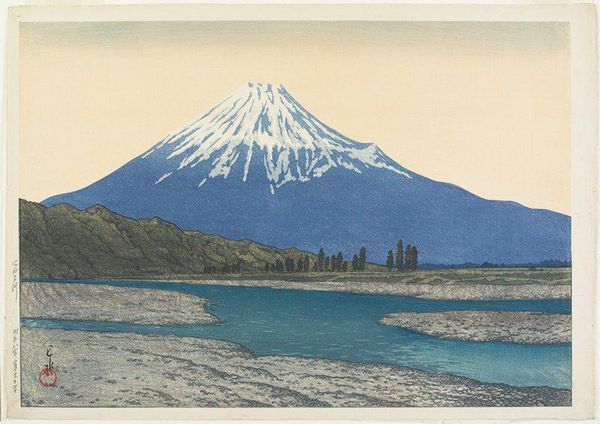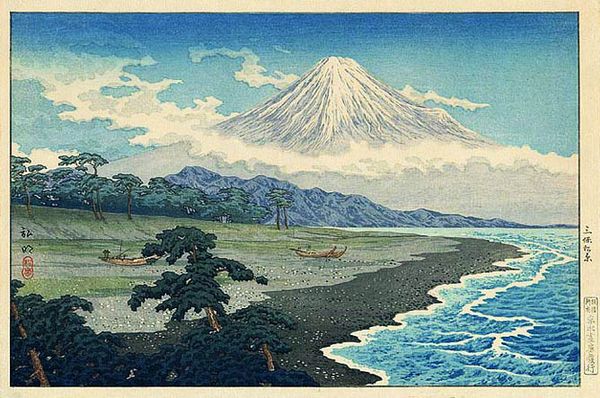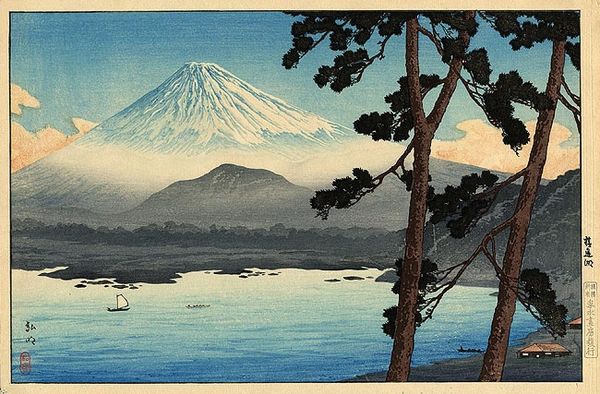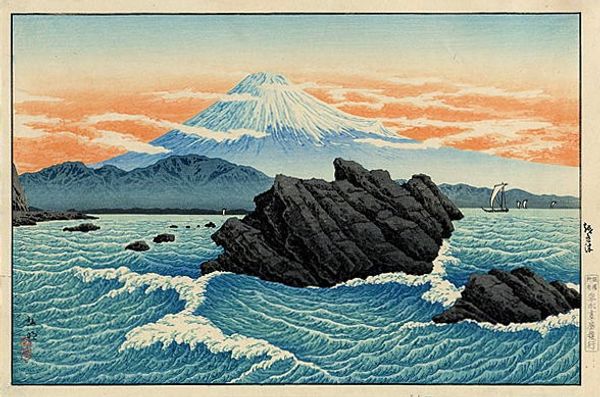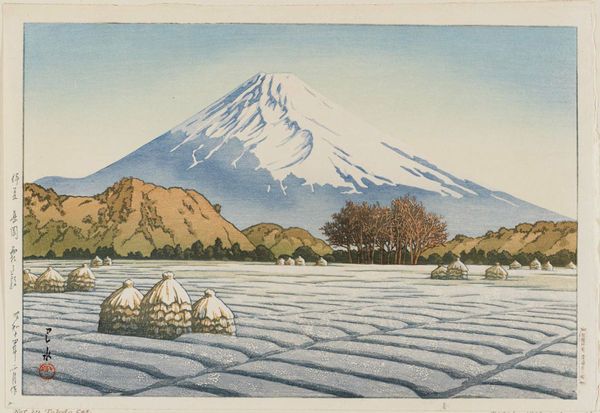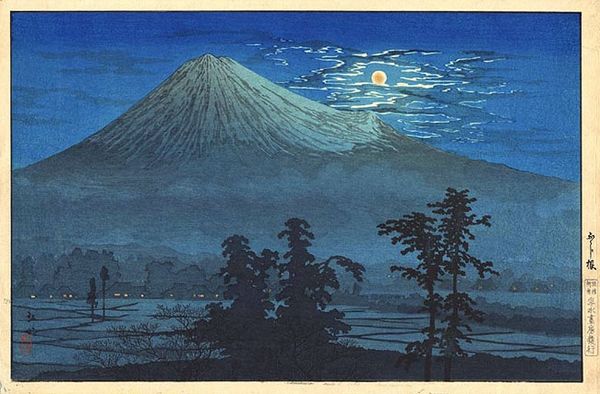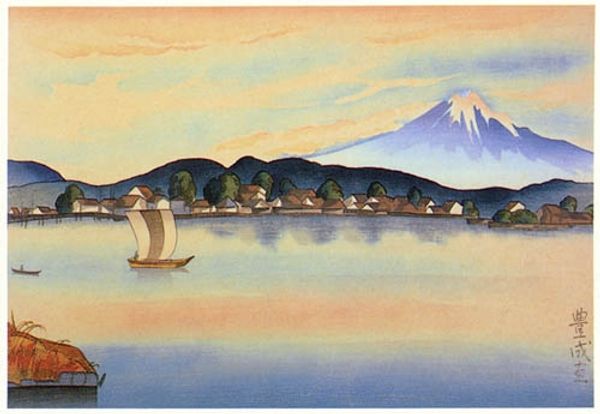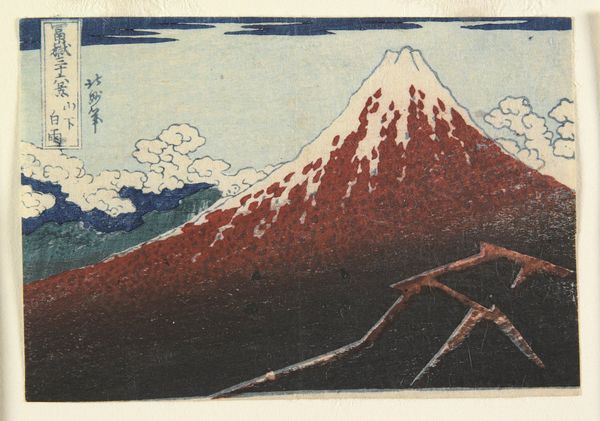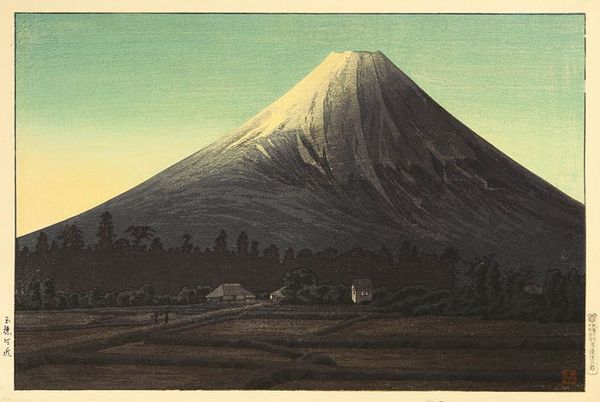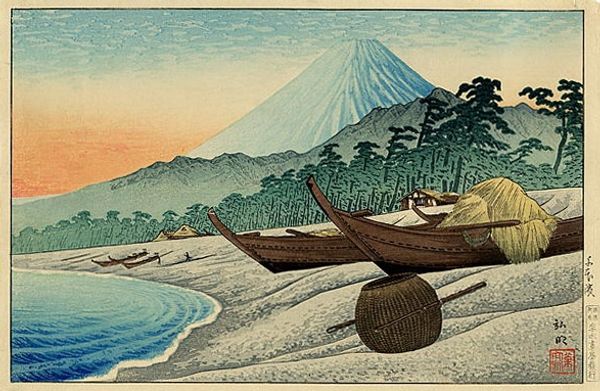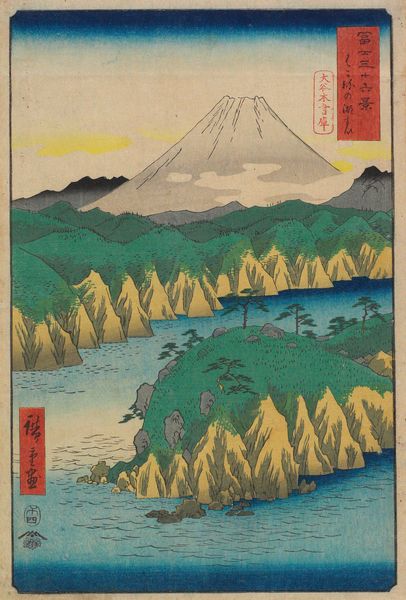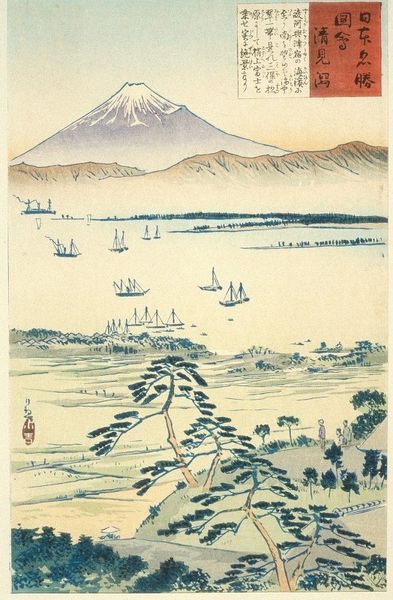
Copyright: Public domain
Editor: So, this is "Fuji River" by Shotei Takahashi, created around 1930, a woodblock print in tempera. It’s dominated by the iconic Mount Fuji, but there’s a calmness despite its grandeur, you know? What stands out to you about this piece, especially given the historical context? Curator: Well, considering this was produced in 1930, a period marked by both economic hardship and increasing nationalism in Japan, it's fascinating to see Mount Fuji presented in such a… pristine manner. It's a clear engagement with the Ukiyo-e tradition, presenting idealized landscapes. Do you think that's simply aesthetic choice or something more deliberate? Editor: Hmmm, maybe it was deliberate. Was this romanticized depiction of nature a way to sidestep the social issues that were present at the time? Or maybe even encourage patriotism, reminding viewers of Japan’s natural beauty? Curator: Exactly! The Ukiyo-e prints were traditionally aimed at a merchant class, weren’t they? But by 1930, who was consuming this imagery and what role might it have played in shaping national identity? These prints were no longer just decorative. Think about the influence on international perceptions too; How does this imagery project Japan to the world? Editor: It's interesting how this serene landscape could carry such a complex weight of social and political meanings. It shows how artistic representations are deeply intertwined with their historical moment. Curator: Absolutely. Even the choice of such an established artistic method such as Ukiyo-e becomes an assertion of cultural values during periods of societal change and international relationships. It underscores how "traditional" forms can be redeployed to articulate contemporary messages. A potent intersection, wouldn’t you agree? Editor: I do. I’ll definitely look at these landscapes with fresh eyes from now on. Thanks!
Comments
No comments
Be the first to comment and join the conversation on the ultimate creative platform.

